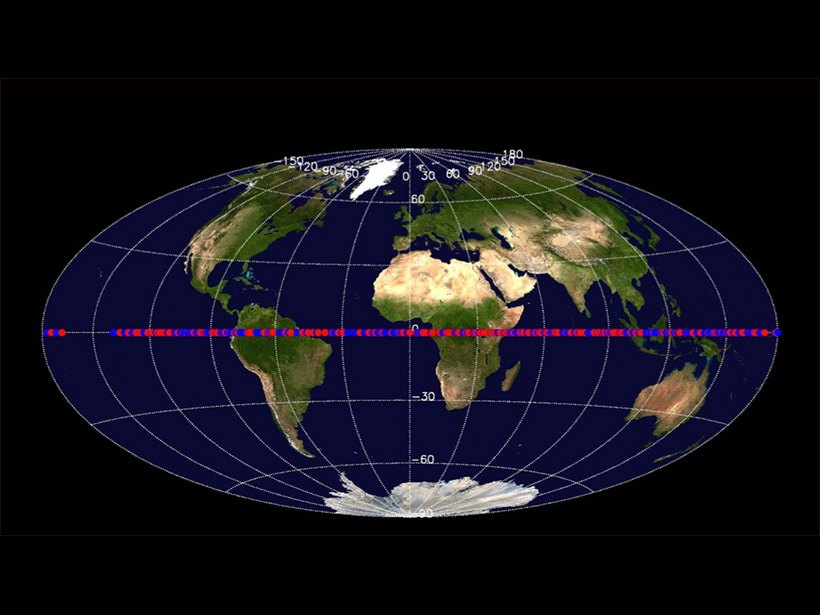Source: Space Weather
The Earth is surrounded by a collection of communications, scientific, and military satellites, many in geosynchronous orbit (GEO), meaning they remain at the same geographic spot above Earth as they orbit and the planet rotates. As they whizz around the planet’s satellite superhighway, they are bombarded with charged particles. Because the onslaught of electrons and ions in orbit can damage or even disable satellites over time, understanding the conditions at GEO can give spacecraft designers and operators information that could be used to mitigate negative effects on satellites.
A new study by Denton et al. presents a new model capable of predicting electron and ion fluxes at GEO with an hour of lead time, allowing satellite operators to take advanced action to protect satellites. The model is based on electron and ion flux observations made between 1989 and 2007 by Magnetospheric Plasma Analyzer (MPA) instruments from the Los Alamos National Laboratory aboard several geostationary spacecraft. Those instruments provide a set of three-dimensional data cubes, including electron energy, local time, and properties of the solar wind (the product of its speed and magnetic field). Using those three values, the model provided by the researchers returns a prediction of the electron and ion flux at GEO.
Previous models used the planetary Kp index, which measures disturbances in Earth’s magnetic field in real time, rather than measurements of the solar wind. The Kp index has drawbacks, however: It is updated every 3 hours, for example, but electron and ion fluxes at GEO often fluctuate much more rapidly. Although the model presented here yielded results equivalent to models that use the Kp index, future versions will include even more data, such as past conditions in the magnetosphere and the time it takes for the solar wind to reach locations in GEO. For scientists who use fluxes at GEO to define boundary conditions for models of the inner magnetosphere, future capabilities for more precise measurements could improve modeling capabilities.
Also, measurements of the Kp index reflect the current conditions, making it impossible for satellite operators to take action to protect their instrumentation ahead of time. The solar wind, on the other hand, can be measured by satellites an hour “upstream” of the Earth. In providing robust electron flux and ion flux results that are comparable in accuracy to previous models but with an hour of lead time, the authors take a step toward both better models of Earth’s magnetosphere and better protection for satellites. The model is freely available for download. (Space Weather, doi:10.1002/2016SW001409, 2016)
—Leah Crane, Freelance Writer
Citation:
Crane, L. (2016), Predicting space weather, protecting satellites, Eos, 97, https://doi.org/10.1029/2016EO056621. Published on 04 August 2016.
Text © 2016. The authors. CC BY-NC-ND 3.0
Except where otherwise noted, images are subject to copyright. Any reuse without express permission from the copyright owner is prohibited.

